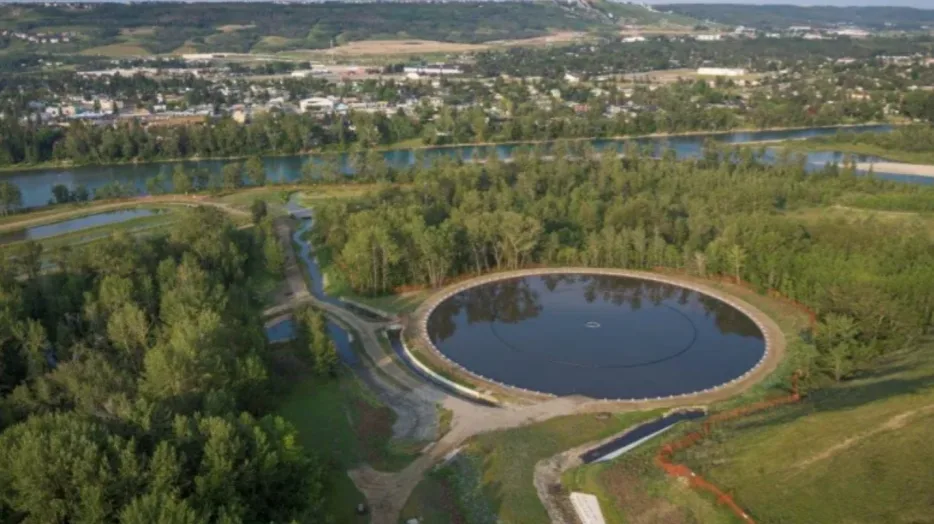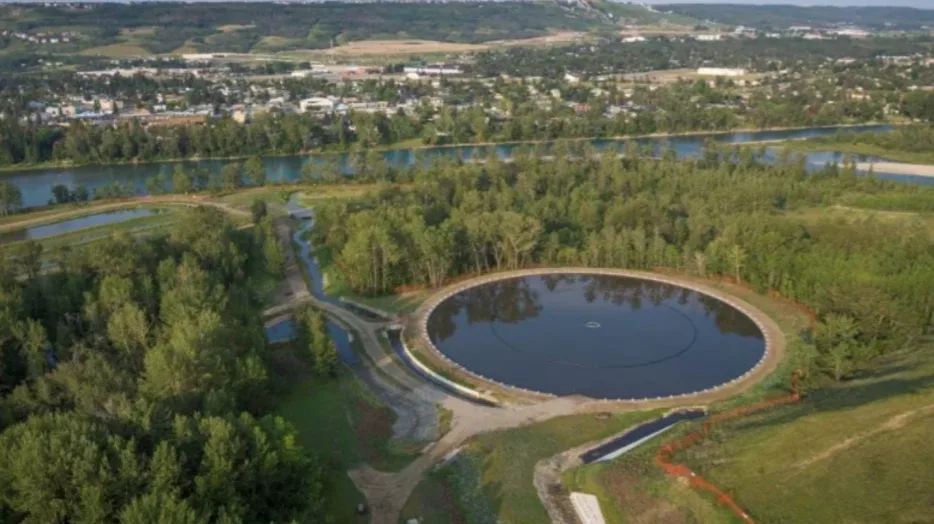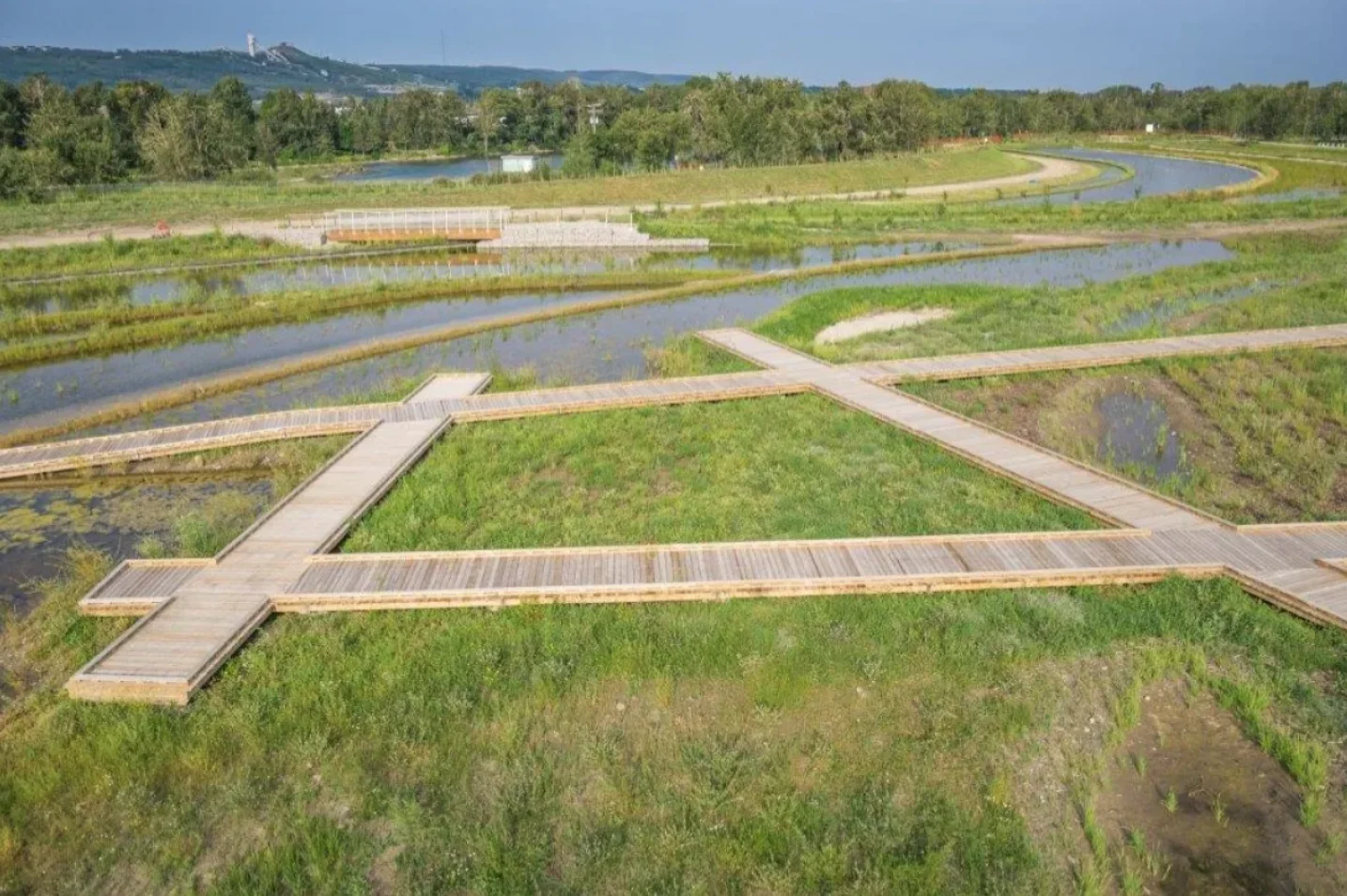
Calgary gravel pit turned park clinches national landscape award

Stormwater from rain or melting snow from eight northwest Calgary neighbourhoods travels to Dale Hodges Park where it is filtered and treated prior to entering the Bow River. (City of Calgary)
A Calgary park, formerly a gravel pit, has won the highest award of honour from the Canadian Society of Landscape Architects for its use of environmental landscape design.
The Jury's Award of Excellence was announced last week. Criteria includes use of innovation in concept, and a level of environmental and social awareness.
Dale Hodges Park, found at 2123 52nd St. N.W., is the transformed site of the former Klippert gravel pit.
The multimillion-dollar transformation was a result of a collaboration between city parks, water resources and public art departments.
"The real learning lesson here, is just working with what you have and what you have at hand to create something completely different and completely unexpected," said David Harrison, a landscape architect with the City of Calgary, on the Calgary Eyeopener Tuesday.

Dale Hodges Park covers the 16-hectare site of the former Klippert Concrete gravel pit in northwest Calgary. (City of Calgary)
SEE ALSO: Grizzly bears 'thriving' in Alberta, science-based estimates show
The park treats storm water, caused by rain and melted snow, before it flows in the Bow River while maintaining a visually appealing public area.
"The water comes in ... through the underground piping and then it just goes through these these wetlands and the structures," he said.
"The whole idea is to slow down the movement of the water so that the sediment just drops out. And so by the time it reaches the Bow River, it's reduced."
Harrison says more than 50 per cent of the sediment that is originally in the storm water gets filtered out, so the water is cleaner as it flows from the streets into the river.
The water infrastructure is also part of a landscape art for visitors, part of what went into the award win.
"It's really so integrated ... the engineering of the storm water infrastructure," said Harrison.
"You more experience it ... you hear the water, you see the water, you see the various locations through the park where the water is treated in different ways. And that's really the art."
The park, including the water treatment infrastructure and public art elements, cost just under $27 million to design.
Intended to show the cohesion between "functional" and "natural" spaces, the park is part of the city's goals for environmental sustainability, according to their website.
"There's a lot of beautiful and entertaining and exciting spots within the park," said Harrison.
This article was originally published for CBC News. Contains files from the Calgary Eyeopener.





